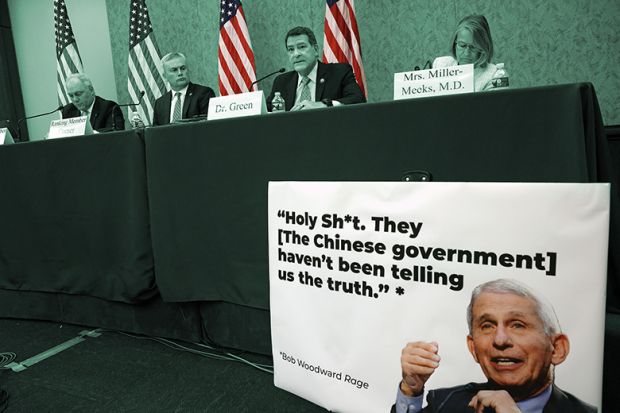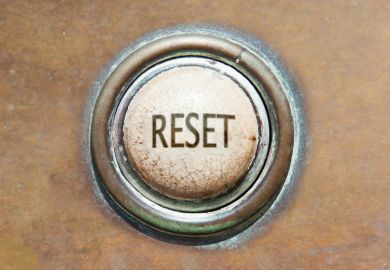As if the direct effects of Covid-19 on public health were not bad enough, the pandemic has also been exploited as an opportunity to advance many socially corrosive agendas. These include xenophobia, science rejection, conspiracy-theory propagation, cultism, antidemocratic agitation, antivaccination propagandising and generalised fearmongering.
Unfortunately, far too many of the academic community are exacerbating the problems. Sometimes their efforts are directed towards countering the antisocial forces; nevertheless, their abandonment of logic and egoless objectivity constitutes a betrayal of the norms of scientific discourse that will ultimately increase public mistrust of science – and loosen humanity’s hold on reality.
One fundamental error is to misunderstand the significance of precedent in science. If a phenomenon has been authenticated in the past then it can recur. However, one cannot generally infer anything about the probability of a natural phenomenon occurring from the fact that it has not previously occurred. This is not to say that there cannot be sound theoretical bases for determining that an event is impossible or unlikely. It simply means that precedent without a solid, determinative scientific concept should not be invoked in argument.
For example, it is claimed that the hypothesis that Sars-CoV-2 (the Covid-19 pathogen) was engineered in a laboratory is supported by its possession of a particular function-enhancing sequence in its spike protein that is unique among the subfamily of coronaviruses to which it belongs. This is logically incorrect. Some coronaviruses in particular subfamilies have such a sequence, and some lack it. Until the first coronavirus in a particular subfamily was found to have such a sequence, none of them were known to do so. Every novel discovery necessarily defies precedent.
Some scientists insist that Sars-CoV-2, whose sequence is closest to that of bat coronaviruses, most likely was transmitted to humans through an intermediate mammalian host because that seems to have been what happened with other novel coronaviruses, such as severe acute respiratory syndrome (Sars) (although this proposition has been challenged) and Middle East respiratory syndrome (Mers). But the sample size is too small to draw such an inference, and no scientific principle would be violated if there were direct transmission from bats.
The pandemic has again demonstrated that there are broad deficiencies in quantitative reasoning skills even within the academy. Statistical data have been misinterpreted and misrepresented. Another logic failure is the inference that what appears to be a rare event is unlikely to underlie an observed outcome. For example, it has been averred repeatedly that Sars-CoV-2 is too well adapted to a human host to have arisen naturally. This is utterly absurd and conveys a complete ignorance of virology and epidemiology.
The argument is made that the virus’ greater transmissibility between humans compared with that of Sars or Mers could not have evolved through natural selection. This appeal to intuition is not scientific. The reason our attention is focused on Sars-CoV-2 is precisely that it is readily transmitted among humans and causes severe disease in some patients. Although the combination is rare, it is not improbable that such a virus should arise.
Humans encounter animal virus particles all the time. Most of those do not overcome the defence barriers that protect us – barriers that include one unique to apes and old world monkeys that counters enveloped viruses such as coronaviruses. Even fewer, after infecting a person, have the capacity to be transmitted to others and cause disease. However, given the extent of our interactions with animal populations we are bound to be exposed to some viruses with these properties. And modern urbanisation and travel patterns are conducive to rapid transmission.
What drives scientists to violate professional standards on the judicious weighing of evidence? Two obvious culprits are team identification and confirmation bias. It is true that such cognitive distortions have frequently been present in historical scientific disputes. Nevertheless, the problems are particularly acute in the discussion of the pandemic, which has been characterised by the clash of political and national agendas with public-health advocacy.
It is evident that the loudest voices are those of people who took sides on some issue regarding the outbreak. They broadcast data and opinions from associates that they believe support those initial stands, and they refuse to consider emerging evidence that challenges their position. Scientists who advocate for a balanced approach, maintaining that definite conclusions cannot be drawn from much of the available information, are largely ignored.
Disinformation about Covid-19 is predominantly distributed through social media. Obviously, those who wish to counter the falsehoods cannot abandon the playing field to the conspiracy-mongers. I am one of those who occasionally use social media to try to transmit the facts, and I would certainly prefer if my message were received by as large an audience as possible. Nevertheless, the techniques employed by the most influential voices, including those who are well intentioned, are frequently antithetical to reasoned discourse.
Prominence is often achieved through the provocation of outrage, rather than induction of rationality. The egos of far too many communicators are dependent on their tally of followers and the responses to their postings. In addition, the size of a person’s electronic entourage is mistakenly used even by serious journalists as a proxy for determining whether a person has something worthwhile to say.
The pandemic has exposed numerous fissures in society. The academic community should not be widening them through logical and psychological fallacies, however crowd-pleasing the initial reaction may be.
David A. Sanders is an associate professor of biological sciences at Purdue University in Indiana.
后记
Print headline: Scholars against science






